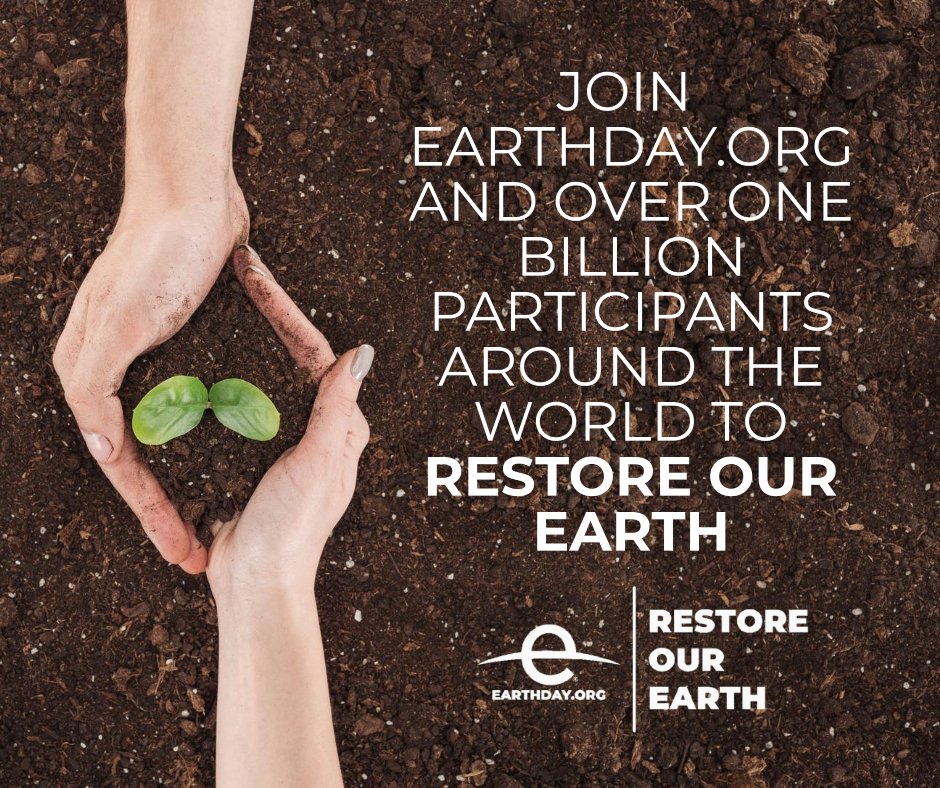Graphic by Earthday.org. Click here to learn more
April is Earth Month. Every April we watch the trees as they spring to life for another season, and we have the opportunity to reflect on how best to protect our environment. As landscape architects, the palette we use to design has always been comprised of trees, shrubs, groundcovers and other natural elements. Our profession occupies a unique space that enables us to integrate natural systems and materials into parks, streets, playgrounds and even our yards. As the understanding of the vital importance of biodiversity and natural systems has expanded, landscape architects have embraced the opportunity to champion native and diverse planting palettes to help protect and enhance existing natural systems.
The first Earth Day was celebrated on April 22, 1970, in response to a series of destructive environmental events. A massive oil spill in Santa Barbara in 1969 proved to be a watershed moment that united lawmakers, activists, academics and myriad public groups. This coalition coined the term Earth Day and in its first year the movement saw the participation of 20 million Americans. In the years following its inception Earth Day has grown to include 1 billion individuals. EARTHDAY.ORG states that on Earth Day 2025:
550 cities and towns will join the Earth Action Day Events, driving local climate action.
100 colleges across the U.S. will mobilize students for Earth Action Day.
1,000,000 schools will integrate Climate Education into their curricula, empowering future generations.
7,500,000 pounds of garbage will be removed through the Great Global Cleanup.
550,000 trees will be planted by The Canopy Project.
If you’re thinking about what you do or are feeling overwhelmed by the big numbers above-- relax. We can all take a few minutes and make an impact! Here are some of our favorite easy ways to get involved and become a steward of our planet:
Build a pollinator house
Simple pollinator houses can be built with a wide array of materials from garden cuttings to reused toilet paper tubes.
Place your new pollinator house in a sunny spot facing as close to south as you can. Make sure that there is some room around the house so the bees can find the entrances.
A good example of a DIY pollinator house can be found HERE.
Plant a native garden
You can start small by just adding one or two plants to an existing garden, can clear an area and sow a native pollinator seed mix, or you can even layout a larger area and add flowering trees, shrubs, grasses and perennials.
Native plants are already acclimated to our local conditions and will need less water and care than non-native plants.
Pollinators have evolved to seek out specific colors of native plants and don’t recognize non-native plants as a food source.
There are many resources online for finding out more about native plants in your area. One good resource for New Jersey and SE Pennsylvania can be found HERE.
Plant a tree
Planting a tree can seem like a daunting task best left to the pros but the truth is that nurseries grow and supply a wide array of tree sizes.
Trees can pull carbon dioxide from the air and sequester it for many years.
Trees clean air, filter water, shade our streets and parks and even slow storm surges.
A single oak tree can host over 500 different species of caterpillars which support a wide variety of birds and other insectivores. Adding one oak tree to your yard can provide a wide range of ecological services.
Take a walk!
Getting out for a walk by yourself or with family and friends is a great opportunity to take in some of the nature around us that we often take for granted.
Every time we choose to walk, we are choosing not to use a car or turn on a television, thus reducing the chemicals and gases that we otherwise would be emitting. As much as we need to find the big solutions, even the smallest reductions can become significant if enough of us join in!

